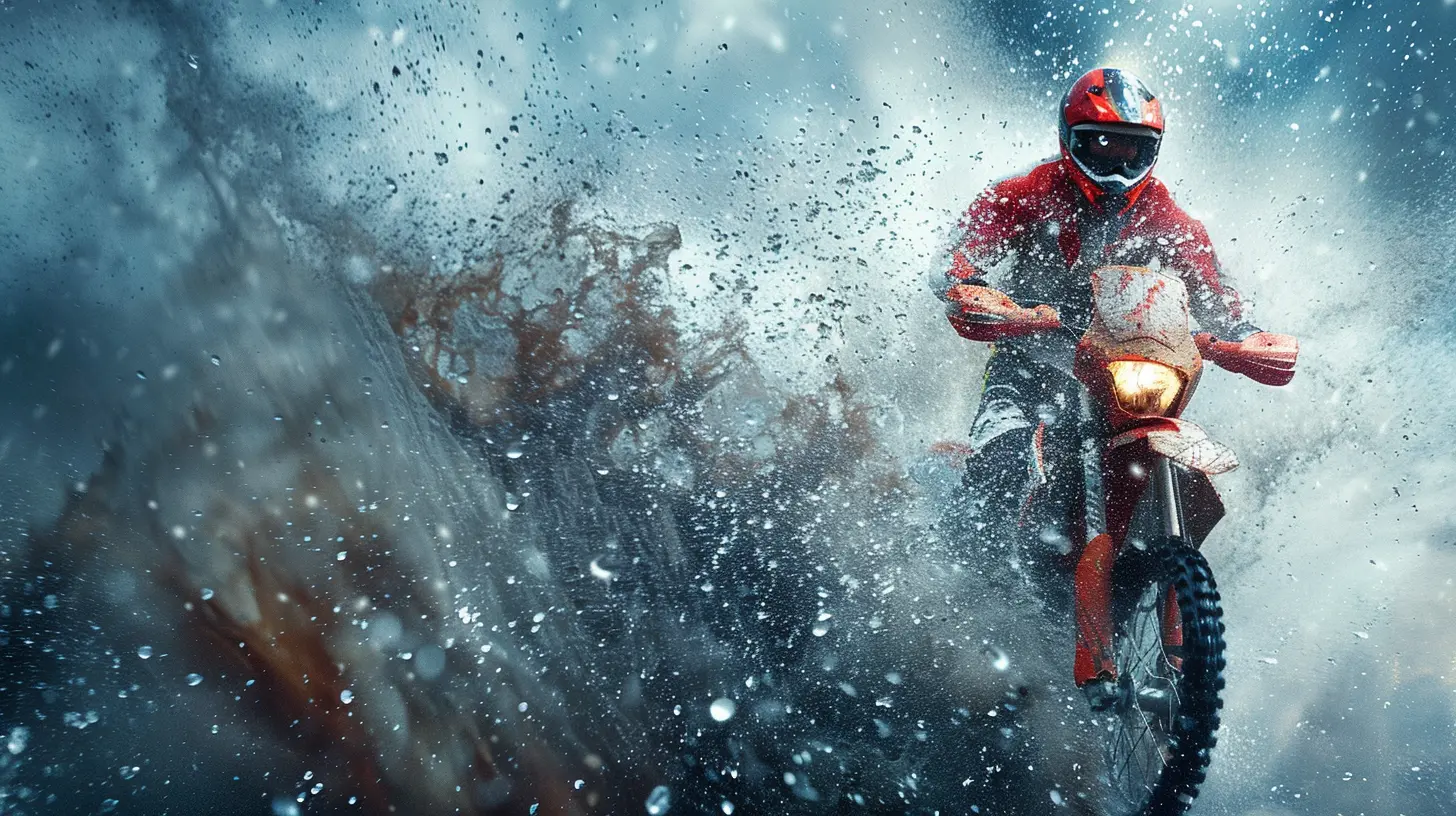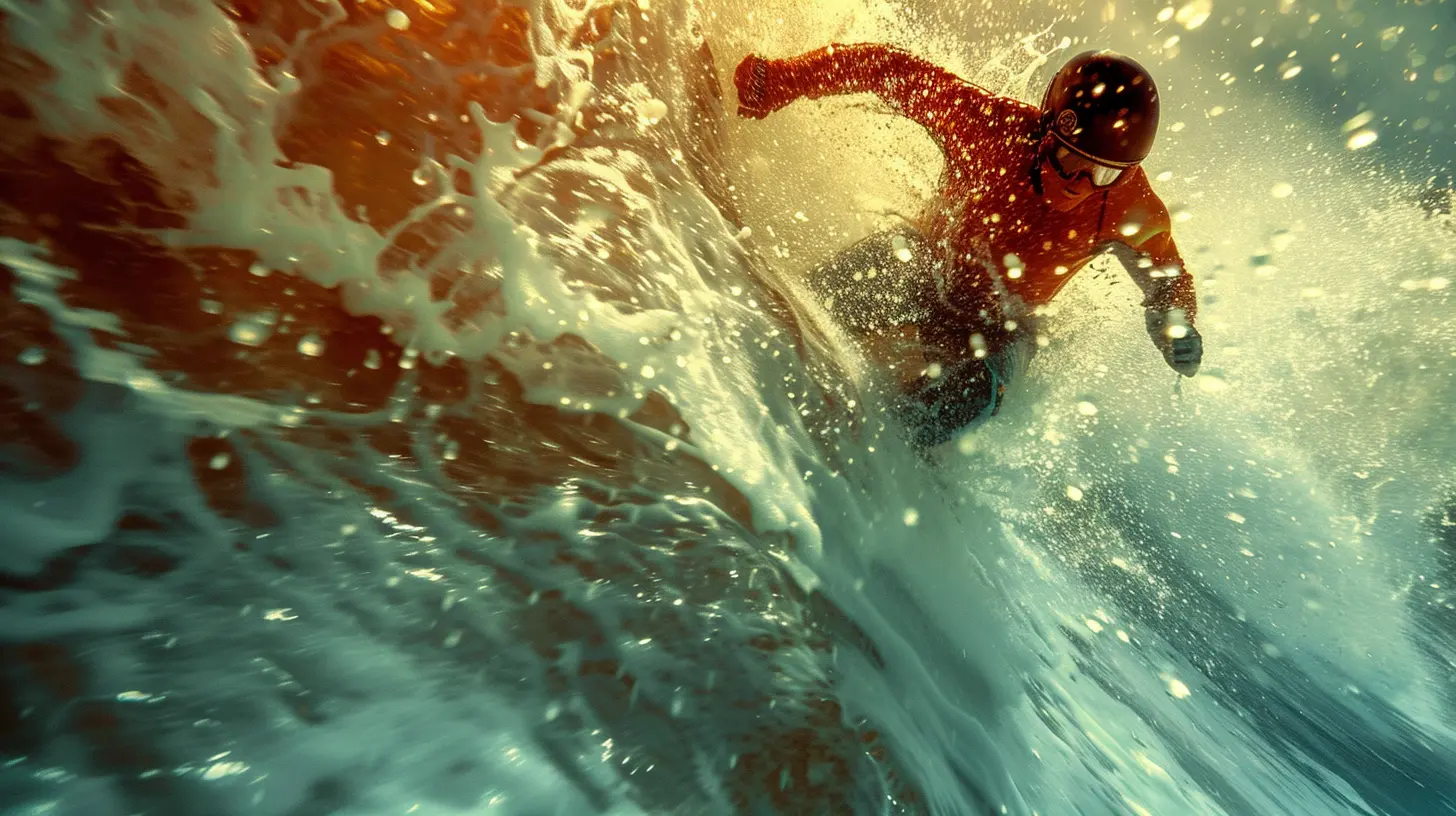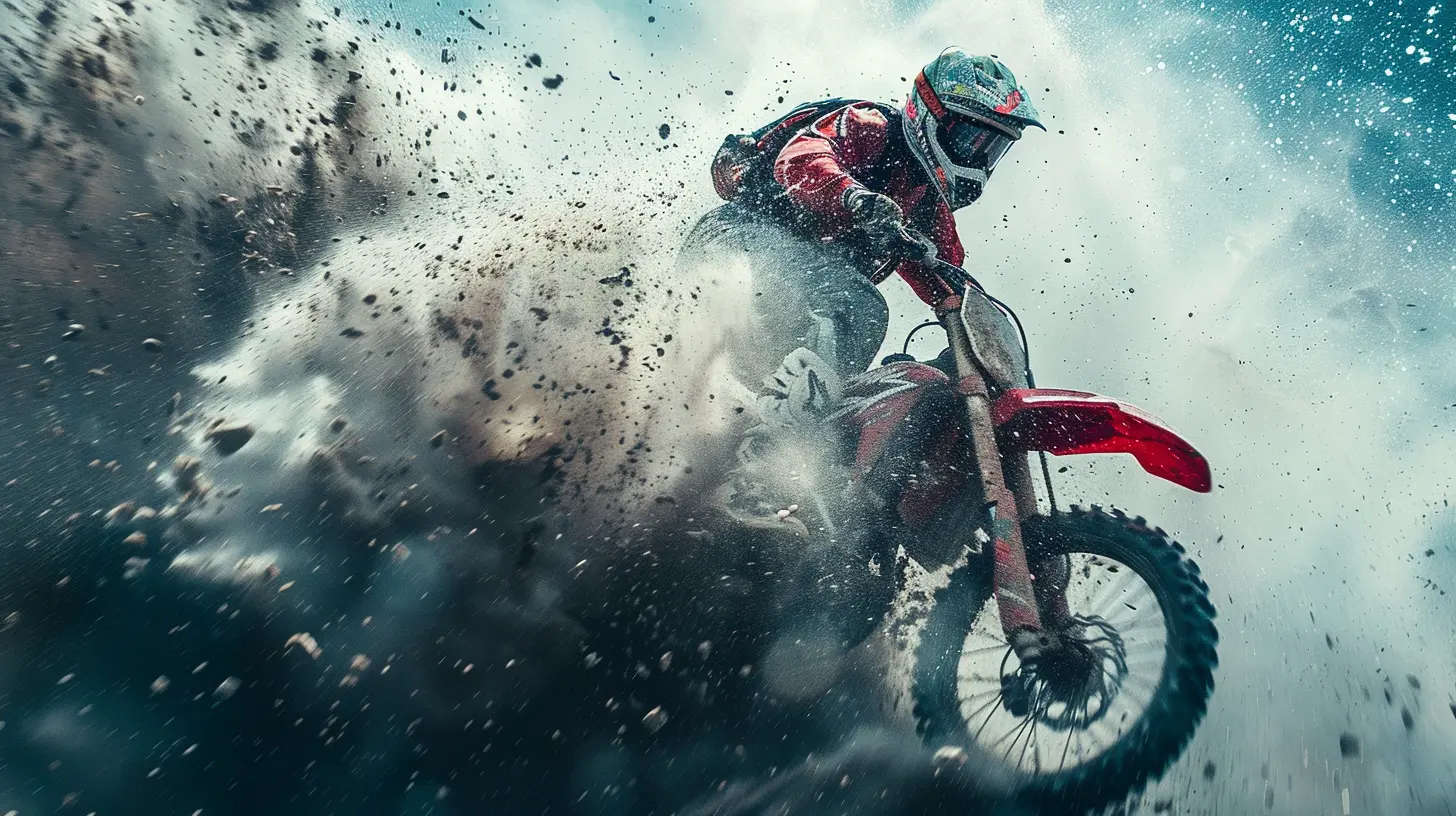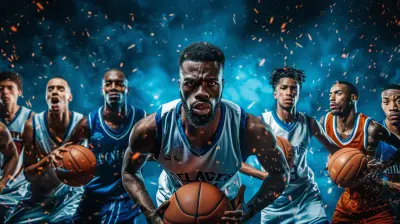Extreme Sports Photography: Capturing the Action in Motion
10 May 2025
Extreme sports photography is where adrenaline meets artistry. It's all about freezing those jaw-dropping moments—whether it's a mountain biker mid-air, a surfer tackling a colossal wave, or a skateboarder pulling off an impossible trick. But hey, let’s be real—it’s not just about snapping pictures. It’s about telling a story, capturing raw emotions, and keeping up with daredevils who live life on the edge.
So, how do you master the art of extreme sports photography? Buckle up, because we’re diving deep into the world of action-packed shots, camera settings, composition tricks, and pro tips to help you nail those high-intensity moments!

Why Extreme Sports Photography is a Unique Challenge
Let’s face it—taking pictures of extreme sports is not your typical Sunday afternoon photography session. You’re dealing with unpredictable movements, insane speeds, and often, tricky lighting conditions. Capturing motion without blur, ensuring crisp detail, and still making the shot look dynamic? That’s the challenge!Unlike shooting still subjects where you can take your time adjusting settings, here, every second counts. You either capture the moment or miss it forever. That means you need top-notch reflexes, a solid understanding of your gear, and a passion for the sport itself.

Essential Gear for Extreme Sports Photography
Before you even press that shutter button, having the right gear is half the battle won. Let’s go over the must-haves:1. Camera and Lenses
While a smartphone camera might work for casual shots, serious extreme sports photography requires a professional setup.- Camera: A DSLR or mirrorless camera with a fast burst mode (at least 10 frames per second) and excellent autofocus is ideal. Full-frame sensors give better image quality, but crop sensors can provide extra reach.
- Lenses: A telephoto lens (70-200mm or 100-400mm) is great for capturing distant subjects. A wide-angle lens (16-35mm) adds drama and perspective, making shots feel immersive.
2. High-Speed Memory Cards
You don’t want your camera slowing down when the action heats up. Use UHS-II SD cards or CFexpress cards for faster write speeds, ensuring you don’t miss a split-second trick.3. Tripod or Monopod
For stability while panning or capturing long-exposure shots, a lightweight monopod works wonders. A tripod is helpful for planned action shots, especially in mountain biking or snowboarding scenarios where you can anticipate the movement.4. Protective Gear
Extreme sports often mean extreme environments. Whether it's sand at motocross events or water near surf spots, your camera needs protection. Weather-sealed cameras, lens hoods, and rain covers will help safeguard your gear.
Mastering Camera Settings for Action Photography
To truly capture extreme sports in motion, you need to nail your camera settings. The right combination of shutter speed, aperture, and ISO can make or break your shot.Shutter Speed: The Key to Freezing Motion
The golden rule? Faster is better. For most extreme sports:- 1/1000s to 1/2000s – Ideal for surfing, skateboarding, and motocross.
- 1/500s – Sufficient for cycling and some slower maneuvers.
- 1/250s – Can work for panning shots where you intentionally blur the background.
Aperture: Balancing Depth of Field
A wider aperture (f/2.8 - f/4) helps isolate the subject from the background, making them pop. However, if you're shooting in bright daylight, you might need to stop down to f/8 to avoid overexposure.ISO: Adapting to Lighting Conditions
Keep your ISO as low as possible to maintain image quality. But, if you're shooting in low light (like night BMX sessions or indoor skateparks), don’t be afraid to push ISO up to 3200 or higher, depending on your camera’s capability.Autofocus: Keeping Up with the Speed
Use Continuous Autofocus (AI Servo/AF-C mode) to track moving subjects. Pair it with burst mode to capture multiple frames per second, increasing your chances of getting the perfect shot.
Composition Techniques to Make Your Shots Stand Out
A technically perfect shot is great, but a well-composed shot? That’s what makes it memorable. Here are some tricks to enhance your compositions:1. Rule of Thirds
Don't just center your subject—position them off to the side for a more dynamic composition. This naturally draws the viewer’s eye toward the action.2. Leading Lines
Use natural or environmental elements like roads, railings, or waves to guide the viewer's eyes to the subject. This creates a sense of depth and movement.3. Motion Blur & Panning
Want to add drama? Instead of freezing everything, try panning with the motion while using a slower shutter speed (around 1/30s to 1/100s). This blurs the background while keeping the subject sharp, emphasizing speed.4. Low Angles for Impact
Shooting from a lower perspective makes athletes look larger than life. It adds intensity and makes action shots feel more powerful.5. Framing for Storytelling
Use natural elements—trees, tunnels, or even the crowd—to frame your subject. This technique adds context and depth to your shot.Pro Tips for Capturing the Best Extreme Sports Shots
1. Anticipate the Action
Professional extreme sports photographers don’t just react; they predict. Understanding the sport helps you anticipate key moments. Watch for cues—when a skateboarder crouches, they’re about to pop a trick. When a surfer paddles hard, a big wave is coming.2. Get Close (But Stay Safe!)
Zooming in is great, but being close to the action adds intimacy. That said, safety is key. Always respect event rules and don’t put yourself or athletes in danger.3. Shoot in Burst Mode
Single-shot mode isn’t going to cut it in high-speed sports. Use high-speed continuous shooting to capture multiple frames in rapid succession. This increases your chances of getting the perfect action shot.4. Capture the Emotion
Extreme sports aren’t just about tricks—they’re about passion, struggle, and triumph. Don’t just focus on the action. Capture those candid moments when an athlete celebrates, wipes out, or prepares intensely before a run.5. Use Natural Light Creatively
Golden hour (early morning and late afternoon) offers the best lighting. If you’re shooting midday, find shadows or use backlighting to create silhouettes and dramatic effects.
Editing: Enhancing Your Shots Without Overdoing It
A great shot starts with the camera, but a little post-processing can take it to the next level.- Adjust contrast and sharpness to bring out details.
- Boost colors subtly to make extreme sports shots more vivid.
- Crop strategically to eliminate distractions.
- Use vignetting to subtly draw attention to the main subject.
Final Thoughts
Extreme sports photography is an electrifying blend of skill, passion, and quick reflexes. It’s not just about having a fancy camera—it’s about understanding the sport, predicting the action, and capturing those heart-pounding moments in the most dynamic way possible.So, grab your gear, find an epic spot, and start shooting. Who knows? Your next shot could be the one that tells a thrilling story, one frozen second at a time.
all images in this post were generated using AI tools
Category:
Extreme SportsAuthor:

Uziel Franco
Discussion
rate this article
5 comments
Orionyx Walker
I love this article! Extreme sports photography really captures the energy and thrill of the moment. It's incredible how these photographers freeze such intense action—makes you feel like you're right there in the middle of the action. Can't wait to see more breathtaking shots!
May 16, 2025 at 8:01 PM

Uziel Franco
Thank you so much! I'm glad you enjoyed the article—it's amazing how these photographers bring the thrill to life! Stay tuned for more exciting shots!
Milena Cantu
Dynamic angles truly showcase the thrill of adventure.
May 16, 2025 at 3:37 AM

Uziel Franco
Absolutely! Capturing dynamic angles really highlights the excitement and intensity of extreme sports. It brings the action to life!
Maddison Benton
Extreme sports photography transcends mere documentation; it immortalizes adrenaline, emotion, and the essence of adventure. Capturing athletes in their most dynamic moments reveals not just their prowess but also the beauty of spontaneity, making each shot a breathtaking narrative of passion and determination.
May 12, 2025 at 12:40 PM

Uziel Franco
Thank you for your insightful comment! I completely agree—extreme sports photography truly captures the thrill and emotion of adventure, turning fleeting moments into powerful narratives.
Zorion Montgomery
This article brilliantly highlights the dynamic nature of extreme sports photography. The tips provided are invaluable for capturing the thrill of the moment. Excited to try these techniques myself!
May 11, 2025 at 11:53 AM

Uziel Franco
Thank you for your kind words! I'm glad you found the tips helpful and inspiring. Enjoy capturing those thrilling moments!
Charlie McElhinney
Fascinating blend of thrill and artistry—what a unique perspective!
May 10, 2025 at 3:24 AM

Uziel Franco
Thank you! I'm thrilled you enjoyed the blend of excitement and artistry in extreme sports photography!
MORE POSTS

The Rise of Women in Skateboarding: Changing the Game

Breaking Down the Tactics: How Strategy Plays Into All-Star Games

How the All-Star Game Reflects the Evolution of the Modern Athlete

Esports Coaching: How to Train the Next Generation of Champions

Esports Documentaries: Must-Watch Films for Fans and Newcomers